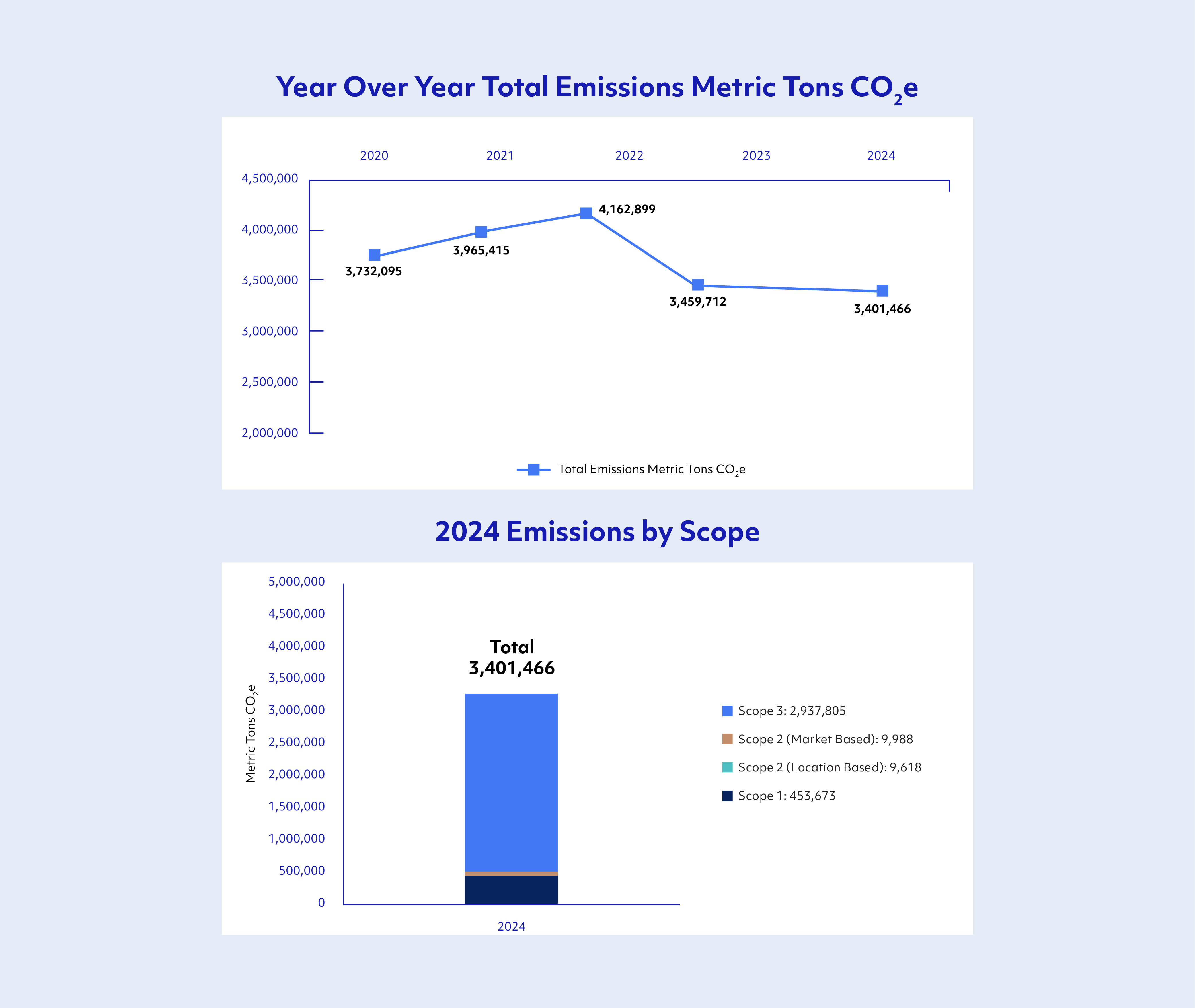
Safeguarding the Environment

Reducing Environmental Impact
We’re reducing our environmental impact through innovation. Delivering LNG maritime and supply solutions supports customers and thriving communities. We’re implementing new technologies that enable trucks and terminals to operate more efficiently.
Explore how our efforts to support energy transition, waste reduction and vessel performance are shaping a more resilient future.
We have advanced the transition to lower-emission fuels through liquefied natural gas (LNG) with the delivery of Progress, the largest U.S.-flagged LNG bunker barge. Under a long-term charter to Shell, the barge expands access to cleaner energy for ship operators at the Port of Savannah in Georgia. LNG is the lowest-carbon fuel currently available to shipping at scale, emitting up to 23% fewer greenhouse gas (GHG) emissions (well-to-wake) compared to very low or ultra-low sulfur diesel fuel. This means more efficient operations and a healthier future for our climate and communities.
Our commitment to minimizing environmental impact in our operations is reflected in the 2024 launch of eWolf, the first all-electric tugboat in the United States. Developed through a partnership between Crowley and federal, state and local government agencies, eWolf operates with battery power and utilizes a shoreside microgrid charging station at the Port of San Diego in California. In its inaugural six months, eWolf successfully completed 155 assignments, consuming 365 MWh of electricity with generators supported by biodiesel. That’s notably less than the 14,000 gallons of diesel a conventional tugboat would have required for the same tasks.
Our people are the driving force behind our commitment to environmental stewardship. In 2024, the Chamber of Shipping honored 101 of our vessels and their dedicated crews with Environmental Achievement Awards. This recognition reflects the incredible discipline and care our teams bring to every operation, ensuring safe, environmentally responsible performance year after year. Together, these vessels have achieved a combined 864 years without reportable spills or environmental citations. From tugboats to tankers, our collective efforts continue to safeguard the oceans and protect communities.

Crowley is committed to reducing waste while maximizing efficiency. In 2024, our land operations across the U.S. and Central America retreaded more than 79,000 tires and refurbished over 600 chassis. Retreading uses just 20% of the materials needed for a new tire, preserving resources without compromising performance. Chassis refurbishment, which includes rust removal, re-coating and replacing key components, can extend equipment life by up to 12 years. These efforts enable us to deliver reliable, high-performing assets to our customers, reduce costs and minimize the environmental impact of manufacturing new equipment.

Resources
Click below to download our 2024 sustainability disclosures.
Build Your Career
Join a team recognized for outstanding achievement where your work helps protect diversified industries and communities. See our careers and become part of our award-winning legacy.